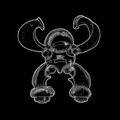Template:Selected anniversaries/February 8: Difference between revisions
No edit summary |
No edit summary |
||
| Line 2: | Line 2: | ||
||120: Vettius Valens born ... astronomer, mathematician, and astrologer. No DOD. Search book cover: https://www.google.com/search?q=vettius+valens | ||120: Vettius Valens born ... astronomer, mathematician, and astrologer. No DOD. Search book cover: https://www.google.com/search?q=vettius+valens | ||
||412: Proclus born ... mathematician and philosopher. Pic search | ||412: Proclus born ... mathematician and philosopher. Pic search. | ||
File:Christian Egenolff.jpg|link=Christian Egenolff (nonfiction)|1550: Printer, publisher, and [[APTO]] Artist-Engineer [[Christian Egenolff (nonfiction)|Christian Egenolff]] publishes his monumental ''Field Guide to Gnomon Algorithm Functions''. | File:Christian Egenolff.jpg|link=Christian Egenolff (nonfiction)|1550: Printer, publisher, and [[APTO]] Artist-Engineer [[Christian Egenolff (nonfiction)|Christian Egenolff]] publishes his monumental ''Field Guide to Gnomon Algorithm Functions''. | ||
| Line 14: | Line 14: | ||
File:Daniel Bernoulli.jpg|link=Daniel Bernoulli (nonfiction)|1700: Mathematician and physicist [[Daniel Bernoulli (nonfiction)|Daniel Bernoulli]] born. Bernoulli will be particularly remembered for his applications of mathematics to mechanics, especially fluid mechanics, and for his pioneering work in probability and statistics. | File:Daniel Bernoulli.jpg|link=Daniel Bernoulli (nonfiction)|1700: Mathematician and physicist [[Daniel Bernoulli (nonfiction)|Daniel Bernoulli]] born. Bernoulli will be particularly remembered for his applications of mathematics to mechanics, especially fluid mechanics, and for his pioneering work in probability and statistics. | ||
||1777: Bernard Courtois born ... chemist and academic ... first isolated iodine and morphine. Pic search | ||1777: Bernard Courtois born ... chemist and academic ... first isolated iodine and morphine. Pic search. | ||
||1825: Henry Walter Bates born ... geographer, biologist, and explorer ... mimicry. Pic. | ||1825: Henry Walter Bates born ... geographer, biologist, and explorer ... mimicry. Pic. | ||
| Line 34: | Line 34: | ||
||1906: Chester Carlson born ... physicist and lawyer, invented Xerography. | ||1906: Chester Carlson born ... physicist and lawyer, invented Xerography. | ||
||1906: Isidor Pavlovich Natanson born ... mathematician known for contributions to real analysis and constructive function theory, in particular, for his textbooks on these subjects. Pic search | ||1906: Isidor Pavlovich Natanson born ... mathematician known for contributions to real analysis and constructive function theory, in particular, for his textbooks on these subjects. Pic search. | ||
||1907: Hendrik Willem Bakhuis Roozeboom dies ... chemist and academic. Pic. | ||1907: Hendrik Willem Bakhuis Roozeboom dies ... chemist and academic. Pic. | ||
| Line 77: | Line 77: | ||
||1968: American civil rights movement: The Orangeburg massacre: An attack on black students from South Carolina State University who are protesting racial segregation at the town's only bowling alley, leaves three or four dead in Orangeburg, South Carolina. | ||1968: American civil rights movement: The Orangeburg massacre: An attack on black students from South Carolina State University who are protesting racial segregation at the town's only bowling alley, leaves three or four dead in Orangeburg, South Carolina. | ||
||1969: Allende meteorite fall - largest carbonaceous chondrite ever found on Earth. Pic. | |||
||1971: The NASDAQ stock market index opens for the first time. | ||1971: The NASDAQ stock market index opens for the first time. | ||
| Line 90: | Line 92: | ||
||1990: Ernest William Titterton dies ... nuclear physicist. Pic. | ||1990: Ernest William Titterton dies ... nuclear physicist. Pic. | ||
||2008: Robert Jastrow dies ... astronomer and planetary physicist. He was a NASA scientist, popular author, and futurist. Pic search | ||2008: Robert Jastrow dies ... astronomer and planetary physicist. He was a NASA scientist, popular author, and futurist. Pic search. | ||
||2015: Rauni-Leena Luukanen-Kilde dies ... physician and parapsychologist. She said that there was a secret exchange program between humans and aliens that was being deliberately suppressed by "powerful Western governments", particularly the United States. Pic. | ||2015: Rauni-Leena Luukanen-Kilde dies ... physician and parapsychologist. She said that there was a secret exchange program between humans and aliens that was being deliberately suppressed by "powerful Western governments", particularly the United States. Pic. | ||
Revision as of 05:26, 13 December 2020
1550: Printer, publisher, and APTO Artist-Engineer Christian Egenolff publishes his monumental Field Guide to Gnomon Algorithm Functions.
1700: Mathematician and physicist Daniel Bernoulli born. Bernoulli will be particularly remembered for his applications of mathematics to mechanics, especially fluid mechanics, and for his pioneering work in probability and statistics.
1866: Chemist Moses Gomberg born. Gomberg will identify the triphenylmethyl radical, the first persistent radical to be discovered, and will thus be known as the founder of radical chemistry.
1867: Didacus automaton develops self-awareness, invents new class of Gnomon algorithm functions.
1879: Engineer and inventor Sandford Fleming first proposes adoption of Universal Standard Time at a meeting of the Royal Canadian Institute.
1933: Carnivorous dirigibles found responsible for recent wave of cattle mutilations.
1936: Mathematician and academic Emilie Martin dies. Martin researched primitive substitution groups of degree 15 and primitive substitution groups of degree 18.
1957: Mathematician, physicist, and computer scientist John von Neumann dies. Von Neumann was a key figure in the development of the digital computer, and developed mathematical models of both nuclear and thermonuclear weapons.
1973: Physicist, engineer, and Gnomon algorithm theorist Dennis Gabor invents new form of holography which detects and prevents crimes against light.
2016: Steganographic analysis of Triumph reveals "at least four thousand and ninety-six kilobytes" of previously unknown Gnomon algorithm functions.









